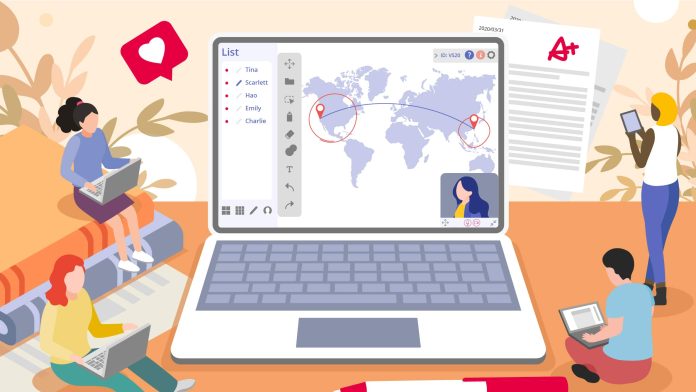Zoom and comparable video conferencing technologies were developed to suit corporate and consumer needs such as communicating with family and friends, holding business meetings, and streaming an event or webinar.
Communication between students and professors in the classroom, whether in person or virtually, is a complex network. Teachers must have the attention of all students when delivering lessons, students must interact with teachers and each other in order to share their insights and collaborate, groups must be able to interact with each other, and the teacher must have individual conversations with each student or a specific group. In a Zoom or Adobe Connect call, these critical learning moments are tough to record. Educators require a solution for online learning. Consider online classes.
How can we provide educators with a virtual classroom solution that is just as effective as a physical classroom?
Teachers who are used to managing physical classrooms may struggle to manage virtual classrooms because virtual classrooms lack resources such as focus tracking, seating arrangements, and in-session participation data. Virtual classrooms should enhance learning by providing an additional layer of interaction and statistics that allow professors to better manage their students.
What features should a Virtual Classroom tool have?
1# Network of Variable Communication
One-to-one messaging, seamless audio and video for students and instructors, one-to-all for professors that bans any contact between students, and intra and inter-group communication should all be possible with the solution. Separate places for group discussions, as well as the opportunity to monitor multiple rooms, can aid students’ growth.
2# Effective Teaching Resources
Students should be able to access library services and submit course plans, curriculum, reading materials, session details, and assignments during sessions if the virtual classroom is straightforward to integrate. Teachers are unable to focus on their students’ activities when showing their screens during video conferencing, however, virtual classrooms may now broadcast films, give basic resources such as PDFs, and run polls and Q&A without having to show their screens. All students must have access to a whiteboard so that they can present in groups or individually. Virtual Classrooms may provide a comprehensive solution that allows teachers to assess pupils in real-time, allowing for active participation and exchanges. Class Technologies employed a ‘Podium’ in their virtual classroom. Teachers are always visible.
3# Engagement Analytics
A classroom is densely packed with data points that a teacher cannot monitor in real-time. Virtual Classrooms may track each student’s attentiveness and aggregate it in a report, as well as measure little interactions, such as how much a student engaged in the session via their microphone. Such outcomes may be shown on a dashboard to better analyze student involvement and aid people who want further support in producing tailored course material. It may provide thorough reports for enhanced assessment, freeing up time for teachers to focus on the needs of their kids.











